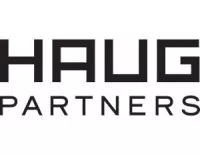On October 9, 2018, the Federal Circuit added to its growing collection of favorable Alice step one rulings1 by reversing portions of a decision from the U.S. District Court for the District of Delaware concerning an invention aimed to streamline the technology of electronic spreadsheets—a technology that has been around for twenty-five years. See Data Engine Technologies LLC v. Google LLC, No. 2017-1135, 2018 U.S. App. LEXIS 28412 (Fed. Cir. Oct. 10, 2018). The Federal Circuit's decision may be viewed as a not-so-gentle reminder to patent applicants and drafters alike to continue to draft software patent claims narrowly and with specificity if they wish to survive patent eligibility challenges under 35 U.S.C. § 101 and Alice step one.
The court commenced its opinion with a robust overview of Data Engine's patents-at-issue: U.S. Patent Nos. 5,590,259; 5,784,545; and 6,282,551 (the "Tab Patents") and U.S. Patent No. 5,303,146 (the "'146 Patent"). See Data Engine, at *2-12. The Tab Patents are entitled "System and Methods for Improved Spreadsheet Interface With User-Familiar Objects." Id. at *1-2. In its detailed review of the Tab Patents, the court noted that they claim "systems and methods for making complex electronic spreadsheets more accessible by providing familiar, user-friendly interface objects—specifically, notebook tabs—to navigate through spreadsheets while circumventing the arduous process of searching for, memorizing, and entering complex commands." Id. at *2. In essence, the Tab Patents aim to overcome some of the challenges users encountered when navigating electronic spreadsheets due to complex menu systems that "diminished the utility and ease of use of this technology." Id. at *3. In an attempt to offer a solution to the challenges of prior art multipage electronic spreadsheets, the Tab Patents are directed to "implementing a notebook-tabbed interface, which allows users to easily navigate through three-dimensional electronic spreadsheets" and "conveniently flip through several pages of notebook to rapidly locate information of interest." Id. at *4-5. The '146 Patent is entitled, "System and Methods for Improved Scenario Management in an Electronic Spreadsheet" and is directed to tools that permit "electronic spreadsheet users to track their changes" automatically, as opposed to manually, when testing a multitude of modeling scenarios. Id. at *10-11.
Data Engine sought this appeal following the trial court's decision granting Google's motion for judgment on the pleadings. In that motion, Google argued that both the Tab Patents and the '146 patent are directed to patent-ineligible subject matter under 35 U.S.C. § 101. Data Engine, at *12. The trial court held that representative claims of the Tab Patents are directed to the abstract ideas of "using notebook-type tabs to label and organize spreadsheets . . . that humans have commonly performed entirely in their minds, with the aid of columnar pads and writing instruments." Id. The trial court also held that the '146 patent claims are directed to the abstract ideas of "collecting spreadsheet data, recognizing changes to spreadsheet data, and storing information about the changes." Id. at *13. Further, none of the patent claims, in the trial court's view, provided the requisite inventive concept to confer patent eligibility. Id.
Reviewing the decision from the trial court de novo, pursuant to Third Circuit law, the Federal Circuit applied the two-step Alice framework2. Id. at *13. Referring to Alice step one, the court stated, "'[w]e must first determine whether the claims at issue are directed to a patent-ineligible concept'" as "'[l]aws of nature, natural phenomena, and abstract ideas are not patentable.'" Id. at *14 (quoting Ass'n for Molecular Pathology v. Myriad Genetics, Inc., 569 U.S. 576, 589 (2013)). The court noted that the inquiry may end at Alice step one should a court determine that "the claims are not directed to a patent-ineligible concept." Id. at *14. If, however, the claims are directed to a patent-ineligible concept, the § 101 patent eligibility analysis requires evaluation under Alice step two to consider the "'elements of each claim both individually and as an ordered combination to determine whether the additional elements transform the nature of the claim into a patent-eligible application.'" Id. at *14-15 (quoting Alice, 134 S. Ct. at 2355).
The court first addressed the Tab Patents, and with the exception of one claim, found that the Tab Patents are directed to patent-eligible subject matter under Alice step one. Data Engine, at *15. The court repeatedly made note of the specificity found throughout the representative claim of the Tab Patents. Id. at *15-18. Specifically, the court found that the claim is directed to a "specific method for navigating through three-dimensional electronic spreadsheets" and provided a "specific solution to then-existing technological problems in computers and prior art electronic spreadsheets." Id. at *15. By alleviating the need to navigate burdensome features, the invention solved a "known technological problem in computers in a particular way." Id. at *16. The court also noted that the invention "for the first time" provided "rapid access to and processing of information in different spreadsheets" which was "applauded by the industry." Id. at *16-17. Of particular note, the court considered the prosecution history as relevant evidence in its de novo review, relying on several articles that touted the advantages of Data Engine's notebook tabs, which the trial court declined to consider. Id. at *17.
In finding the claims patent eligible, the court analogized the specificity of the Tab Patents' representative claim with the patent-eligible claims in Core Wireless. In that case, the court found the subject claims "directed to an improved display interface that allowed users to more quickly access stored data and programs in small-screen electronics, thereby improving the efficient functioning of the computer." Id. at *18 (citing Core Wireless Licensing S.A.R.L. v. LG Elecs., Inc., 880 F.3d 1356, 1359 (Fed. Cir. 2018)). Like the claims in Core Wireless, the representative claim of the Tab Patents recites a "'specific' and 'particular' manner of navigating a three-dimensional spreadsheet that improves the efficient functioning of computers." Id. at *19-20 (quoting Core Wireless, 880 F.3d at 1362-63). The court also relied on its own precedent in Trading Technologies International, Inc. v. CQG, Inc., 675 Fed. Appx. 1001 (Fed. Cir. 2017). Id. at *20. In Trading Technologies, the court agreed with the trial court's finding that the claims-at-issue "require[d] a specific, structured graphical user interface paired with a prescribed functionality directly related to the graphical user interface's structure that is addressed to and resolves a specifically identified problem in the prior state of the art." Id. at *20-21.
Maintaining its focus on the requirement for specific patent claims, the court was not persuaded by Google's reliance on prior cases in which the court held that claims directed to methods of organizing and presenting information are abstract. Id. at *21 (rejecting Google's reliance on Affinity Labs of Texas, LLC v. DirecTV, LLC, 838 F.3d 1253 (Fed. Cir. 2016) and Intellectual Ventures I LLC v. Erie Indemnity Co., 850 F.3d 1315 (Fed. Cir. 2017)). The court distinguished the representative claim of the Tab Patents from the claims-at-issue in Affinity Labs and Intellectual Ventures I noting that the latter claims were "'entirely functional in nature'" and failed to "recite any specific structure or improvement of computer functionality sufficient to render the claims not abstract." Id. at *21-22 (quoting Affinity Labs, 838 F.3d at 1258 and citing Intellectual Ventures I, 850 F.3d at 1328-29).
Turning its focus to the '146 Patent, the court agreed with the trial court's finding that the representative claims are directed to patent-ineligible subject matter under Alice step one because they are directed to the abstract idea of "collecting spreadsheet data, recognizing changes to spreadsheet data, and storing information about the changes." Data Engine, at *28. Akin to the claims-at-issue in Content Extraction, which were directed to methods of extracting data from hard-copy documents using an automated scanner and then recognizing information from the extracted data and storing it, the court found the representative claims of the '146 Patent to be similarly abstract, with "no material difference." Id. at *28-29. The court concluded that the '146 Patent claims are "directed to the abstract idea of collecting, recognizing, and storing the recognized data in memory." Id. at *29 (citing Content Extraction & Transmission LLC v. Wells Fargo Bank, Nat'l Ass'n, 776 F.3d 1343, 1347 (Fed. Cir. 2014)). Proceeding to Alice step two, the court failed to find an inventive concept in the representative claims of the '146 Patent because the claims simply recite the "generic steps of creating a base version of a spreadsheet, creating a new version of the spreadsheet, and determining changes made to the original version." Id. at *29. Quoting Alice, the court found that "[t]he mere recitation of a generic computer cannot transform a patent-ineligible abstract idea into a patent-eligible invention." Id. at *29-30 (quoting Alice, 134 S. Ct. at 2358).
The Federal Circuit's decision in Data Engine is salient for two reasons. First, the decision illustrates a thorough application of the Alice two-step framework. With significant focus on Alice step one, the court emphasized the role of the patent specification, written description, claims and prosecution history in determining patentability. Second, and most importantly for patentees and drafters, Data Engine exemplifies the need to narrowly draft patent claims with specificity, and direct those claims to notable improvements over technological problems present in the prior art. Narrowly drawn claims directed to technological improvements will likely survive patent-ineligible subject matter challenges under 35 U.S.C. § 101 and examination under the Alice two-step analysis.
Footnotes
1 See, e.g., Enfish, LLC v. Microsoft Corp., 822 F.3d 1327, 1339 (Fed. Cir. 2016) ("[b]ecause the claims are not directed to an abstract idea under step one of the Alice analysis, we do not need to proceed to step two of that analysis"). See also, McRO, Inc. v. Bandai Namco Games Am. Inc., 837 F.3d 1299 (Fed. Cir. 2016); Visual Memory LLC v. NVIDIA Corp., 867 F.3d 1253 (Fed. Cir. 2017).
2 See Alice Corp. Pty. Ltd. v. CLS Bank Int'l., 134 S. Ct. 2347 (2014).
The content of this article is intended to provide a general guide to the subject matter. Specialist advice should be sought about your specific circumstances.



